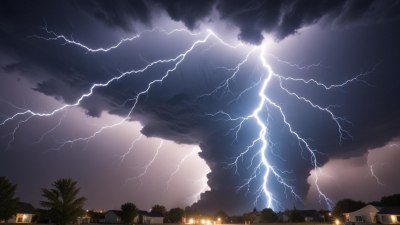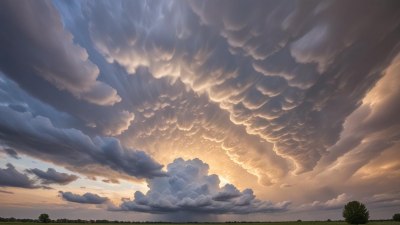What Causes the Green Flash at Sunset
Discover the phenomenon of the green flash at sunset and learn about the science behind this captivating occurrence.

This image was created with the assistance of Freepik
The green flash is a rare and captivating optical phenomenon that occurs just after sunset or just before sunrise. This stunning display has intrigued observers and sparked curiosity for centuries. While many have heard of the green flash, few fully understand the science behind it.
Understanding the Green Flash
The green flash occurs due to the refraction of sunlight in the Earth's atmosphere, a process influenced by the curvature of the Earth and the weather conditions present at the time. When the sun is near the horizon during sunset, its light takes a longer path through the atmosphere, allowing for greater dispersion of colors. While the sunlight contains all colors of light, it is the blue and green wavelengths that have the shortest paths and are more easily bent.
The Role of Atmospheric Refraction
Atmospheric refraction is the bending of light as it passes through layers of air with varying temperatures and densities. When the sun sets, the light from it travels through more air compared to when it is overhead. This means that the light is split into its constituent colors: red, orange, yellow, green, and blue. The blue light bends more than the red light as it passes into our eyes. Under the right conditions, particularly clear skies and a distant horizon, the spectrum can display a fleeting green edge just as the sun disappears.
Conditions for a Visible Green Flash
Not every sunset is likely to produce a green flash. For this phenomenon to be visible, certain atmospheric conditions must be ideal. A clear horizon is essential, along with minimal atmospheric disturbances such as pollution or dense clouds. Also, the position of the observer plays a crucial role; being at a high elevation or overlooking a body of water can enhance the likelihood of witnessing this optical event. Other environmental factors, such as humidity and temperature inversions, can also impact visibility.
The Science behind the Colors
The sun emits light in a spectrum of colors, ranging from violet to red. However, the eye perceives these colors differently due to atmospheric effects. As sunlight passes through the atmosphere, shorter wavelengths like blue and green are scattered more than longer wavelengths like red and yellow. This scattering can occasionally allow observers to perceive the last visible light of the day as the sun slips below the horizon. The momentary green flash can last for just a few seconds, making it a fleeting yet captivating experience.
Historical Context and Cultural Significance
The green flash has a rich history in folklore and cultural context across different societies. Sailors have often regarded it as a sign of good luck, while some cultures believe it symbolizes a moment of truth or revelation. In literature and film, the green flash has been romanticized as a moment where magic and the impossible meet. These cultural narratives often add to the allure of this natural phenomenon, encouraging more people to seek it out during sunset.
Photographing the Green Flash
For photography enthusiasts, capturing the green flash can be a thrilling challenge. To successfully photograph this phenomenon, it is recommended to use a camera with manual settings to control aperture and shutter speed optimally. Use a tripod to maintain stability and avoid motion blur. It’s vital to arrive at the desired location early to set up and be ready for the brief moment when the green flash appears. Experimenting with different exposures and capturing the surrounding atmosphere can enhance the overall composition of the photo.
Experiencing the Green Flash
Witnessing the green flash requires patience and attention. Seek out locations with unobstructed views of the horizon, such as coastal cliffs or beaches. As the sun starts to set, focus on the horizon and be prepared for the green flash moment, which can last only a few seconds. Observing this phenomenon is not just about visual appreciation; it also conveys the beauty and complexity of our natural world, showcasing the intersection of light, atmosphere, and perception.
Scientific Studies and Research
Various scientific studies have aimed to further explain the green flash's mechanisms. Atmospheric scientists have explored how different weather conditions and the composition of the atmosphere impact light refraction. These studies often provide valuable insights on how this optical phenomenon can be simulated under controlled conditions, contributing to our overall understanding of optics and atmospheric pressure. Understanding these principles also aids in weather forecasting, as it links the behavior of light to atmospheric conditions.
The green flash at sunset is a remarkable example of nature's beauty, combining science with the spectacle of the natural world. It serves as a reminder of the captivating phenomena that can occur in our skies, providing not just aesthetic thrills but also insights into the physics of light and atmospheric science. Whether you are a seasoned observer or just curious about this natural wonder, the green flash is a phenomenon worth experiencing at least once in your lifetime.











